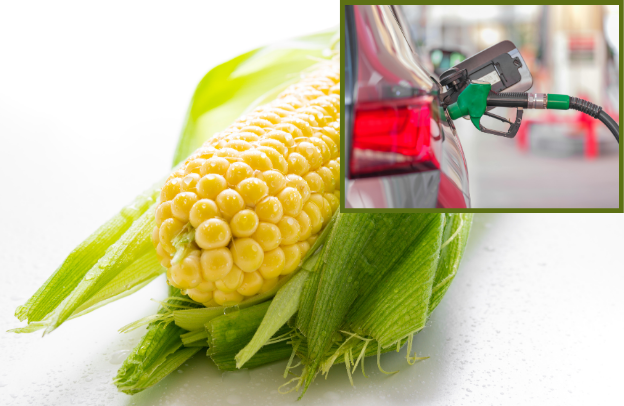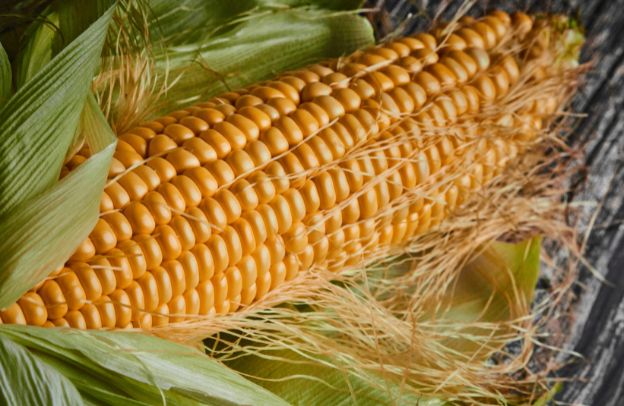Corn-Based Biofuel: How the African Diaspora Can Drive Nigeria’s Renewable Energy Revolution

Can Corn Save the Future? Have you ever wondered if a simple cornfield could hold the key to solving Africa’s energy crisis? Imagine leveraging a crop as common as maize to create a cleaner, greener energy future for Nigeria and the continent at large. For African diaspora entrepreneurs, this isn’t just a dream, it’s a golden opportunity to drive economic growth, create jobs, and tackle food and energy insecurity simultaneously.
Learn How to Leverage Your Story through our Story To Asset Transformation (S.A.T) Framework.
With its abundant agricultural resources and a growth for renewable energy, Nigeria stands poised to lead Africa’s biofuel revolution. But this isn’t just about solving Nigeria’s problems; it’s a chance for you as an African entrepreneur abroad to transform an entire industry while leaving a lasting legacy. Ready to explore how?
What Is Corn-Based Biofuel, and Why Does It Matter?
Corn-based biofuel, also known as ethanol, is a renewable energy source produced from the sugars in corn kernels. It serves as a sustainable alternative to fossil fuels, emitting fewer greenhouse gases and reducing reliance on foreign oil imports.
Ethanol can be blended with gasoline, used as a standalone fuel in specialized vehicles, or even served as a feedstock for industrial applications.
Globally, ethanol production has become a $100 billion industry. Brazil, for instance, leads the way in sugarcane-based ethanol, while the United States focuses on corn.
But Nigeria, with over 70.8 million hectares of arable land and a strategic geographic position, has untapped potential to enter this lucrative market. For the African diaspora, investing in corn-based biofuel could open doors to sustainable profits while addressing Africa’s dual challenges of energy and food security.
See also: The Economic And Health Benefits Of Maize In Nigeria
Nigeria’s Agricultural Wealth: A Sleeping Giant
Nigeria’s agricultural sector contributes approximately 25% of the country’s GDP (AfDB, 2021). With vast agroecological zones and favorable climatic conditions, Nigeria is one of the few nations capable of growing a wide variety of crops.
Maize, a staple in Nigerian diets, is also a key feedstock for ethanol production due to its high starch content.
According to the International Food Policy Research Institute (IFPRI), Nigeria’s land resources could support large-scale maize farming for both food and energy.
Currently, maize accounts for over 60% of Nigeria’s cereal production, making it the most cultivated cereal in the country. With proper investment, the surplus maize produced could fuel a thriving biofuel industry without threatening the food supply.
Additionally, the African Continental Free Trade Agreement (AfCFTA) provides access to a regional market of 400 million people, creating vast export opportunities for Nigerian biofuels. As a member of the African diaspora, you have the chance to bridge the gap between global markets and local farmers, driving growth while creating sustainable energy solutions.
Preparing for Corn-Based Biofuel Production
To produce biofuel efficiently, you need a strategic plan starting with the right corn variety. Not all maize is equal; ethanol production requires high-starch, high-yielding varieties. Collaborating with agronomists and leveraging tools like soil testing kits can help you select the best seed for specific regions.
Once you’ve secured the right variety, focus on field management. Key steps include:
- Crop Rotation: To maintain soil health and prevent pest infestations.
- Irrigation Systems: Especially in areas prone to dry spells.
- Fertilization Schedules: Use organic or eco-friendly fertilizers to maximize yield sustainably.
By integrating precision agriculture technologies, such as drones and GPS-enabled tractors, you can enhance efficiency and monitor crop performance in real-time. These tools are becoming more affordable, giving African farmers a competitive edge in scaling operations.
From Cornfield to Ethanol
The production process of ethanol begins with harvesting and processing. Modern combines can streamline harvesting, reducing waste and ensuring the best yield. After harvesting, the corn undergoes several key steps:
- Grinding: The corn is milled into a fine powder to increase surface area for enzymatic action.
- Cooking: High temperatures break down the starch, making it accessible for conversion.
- Fermentation: Enzymes and yeast are added to convert starches into sugars and then into ethanol.
- Distillation: The ethanol is separated from water and impurities through distillation, followed by purification using molecular sieves.
By-products like distillers dried grains and solubles (DDGS) can be sold as livestock feed, creating an additional revenue stream for producers.
The challenge? Ethanol production is energy-intensive, requiring significant infrastructure and expertise. But the African diaspora can help bridge this gap by bringing investment, knowledge, and cutting-edge technology to Nigeria’s agricultural sector.
Why Corn-Based Biofuel Matters for the African Diaspora
For African entrepreneurs abroad, investing in biofuel production isn’t just a business opportunity, it’s a chance to make a meaningful impact. The potential benefits are enormous:
- Job Creation: Ethanol production requires workers at every stage from farming and processing to logistics and distribution. A single ethanol plant can create thousands of direct and indirect jobs.
- Economic Growth: By exporting biofuels to neighboring countries or even global markets, Nigeria could boost foreign exchange earnings.
- Energy Independence: Reducing reliance on fossil fuel imports can save billions while promoting cleaner energy solutions
Addressing Food Security and Sustainability Concerns
One of the main criticisms of corn-based biofuel is its potential to compete with food production, especially in a country like Nigeria, where food insecurity remains a pressing issue. However, this challenge can be addressed through sustainable practices and innovative approaches:
- Integrating Marginal Lands: Not all arable land is suitable for staple crop production. Marginal lands can be used for biofuel crop cultivation, ensuring food and energy production coexist without conflict.
- Yield Optimization: Using advanced farming techniques such as hybrid seeds, precision farming, and irrigation can significantly boost maize yields, leaving enough for both food and fuel needs.
- Leveraging By-Products: Ethanol production generates valuable by-products like DDGS, which can be repurposed as animal feed, contributing to the livestock sector and overall food supply chain.
As an entrepreneur, your role in promoting awareness of these solutions can help shift public perception and encourage investment in this sector.
According to a ResearchGate article, sustainable agriculture practices such as crop rotation, cover cropping, conservation tillage, and organic farming play a critical role in enhancing soil health and boosting crop yields.
These methods promote the development of soil organic matter, foster nutrient cycling, and enhance soil biodiversity, all of which contribute to the resilience of agricultural ecosystems.
While there can be trade-offs between achieving immediate productivity and securing long-term environmental and social benefits, strategic integration of these practices offers a pathway to balance both objectives.
By leveraging the synergies among these sustainable methods, we can build a resilient global food system capable of feeding a growing population while preserving natural resources and reducing environmental impacts.
The Role of Technology and Innovation
Technology is transforming agriculture and biofuel production worldwide, and Nigeria is no exception. The African diaspora can play a pivotal role by introducing innovations that increase efficiency and reduce costs. Key technologies include:
- Precision Agriculture: Tools like GPS, soil sensors, and drones can optimize planting, irrigation, and harvesting, reducing waste and maximizing yields.
- Biotechnology: Genetically modified (GM) maize varieties designed for high-starch content can further enhance ethanol production efficiency.
- Energy-efficient Distillation: Modern distillation and purification systems consume less energy, lowering the environmental impact of biofuel production.
- Blockchain for Transparency: Blockchain technology can ensure transparency in the supply chain, from farm to fuel, building trust among consumers and investors.
These innovations present lucrative opportunities for diaspora entrepreneurs to partner with Nigerian farmers, research institutions, and government agencies to modernize the biofuel sector.
Unlocking Export Potential: Nigeria and Beyond
Nigeria’s strategic location in West Africa positions it as a hub for biofuel export to the African and global markets. With the African Continental Free Trade Agreement (AfCFTA) opening borders to regional trade, Nigeria can serve as a supplier of ethanol to neighboring countries, reducing reliance on fossil fuels across the continent.
Moreover, exporting ethanol to international markets can boost foreign exchange earnings and strengthen Nigeria’s economy. For the diaspora, this is an opportunity to facilitate global partnerships, attract foreign investment, and create supply chains that extend beyond Africa.
According to an article on ResearchGate, the post-2015 Sustainable Development Goals (SDGs) were designed to build on the successes of the Millennium Development Goals (MDGs), addressing a broader and more integrated agenda.
Among the 17 SDGs, the first two specifically target ending poverty and hunger while promoting food security, proper nutrition, and sustainable agriculture. Achieving these ambitious goals requires the complete eradication of chronic hunger.
The article highlights the challenges posed by biofuel production in the context of these SDGs, focusing on issues that remain inadequately addressed within the framework.
Drawing from a wide array of peer-reviewed and grey literature, it delves into the complex relationship between biofuel production and sustainable development.
It emphasizes the potential conflicts and trade-offs that biofuel production could have on food availability, agricultural sustainability, and environmental conservation, offering critical insights into how these challenges may shape the post-2015 development agenda.
See also: How Maize Is Cultivated for Higher Yield
Why This Matters: A Call to Action for the Diaspora
The time to act is now. With the world moving toward renewable energy and Africa poised to lead the way, the African diaspora has a unique opportunity to drive transformation. By investing in Nigeria’s corn-based biofuel industry, you can:
- Create jobs and empower local communities.
- Boost Nigeria’s economy and energy independence.
- Address environmental challenges by promoting cleaner energy alternatives.
As you explore this opportunity, remember that the impact goes beyond profits. By contributing to Nigeria’s biofuel industry, you’re playing a role in shaping a sustainable future for Africa.
Conclusion: Cornfields of Opportunity
The potential for corn-based biofuel in Nigeria is immense, and the African diaspora holds the key to unlocking it. With abundant resources, strategic markets, and innovative technologies, Nigeria is ready to become a leader in renewable energy. But the journey requires visionaries like you entrepreneurs who see the promise in a cornfield and the possibilities in a kernel of maize.
So, what are you waiting for? The fields are ripe, the opportunities are endless, and the future of Africa’s energy revolution starts with you.
Learn How to Leverage Your Story through our Story To Asset Transformation (S.A.T) Framework.






